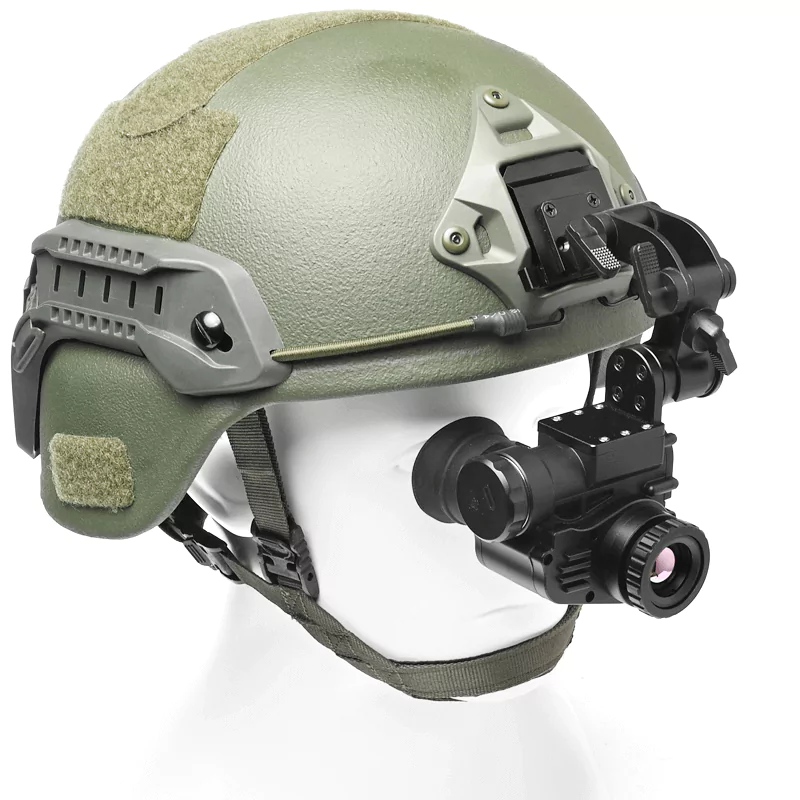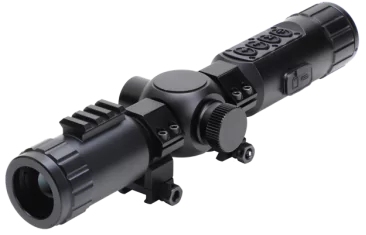
Request


The night sky always grabs our attention with its sparkling stars and far-off wonders. For folks who love peering at the cosmos through an astronomical telescope, learning about related tools can make things more exciting. One such gadget gaining buzz is the thermal scope. It doesn’t replace a telescope, but its ability to catch heat signs opens up fresh ways to explore, even in the dark. This blog walks you through how a thermal scope works. It’s aimed at astronomy fans and outdoor lovers alike. Let’s take it step by step, tying it to astronomical telescope use.
A thermal scope is a device that picks up infrared energy—heat—given off by objects and turns it into a picture you can see. Unlike regular night vision, which boosts weak light, thermal scopes spot temperature differences. This makes them great for finding warm things against cool backgrounds, like animals at dusk or a warm item under the stars.
For people into astronomy, this tech pairs nicely with an astronomical telescope. While a telescope zooms in on visible light from space objects, a thermal scope shows heat patterns on Earth. It can help you notice gear left out in the cold. It’s a useful sidekick for stargazers who also enjoy night outings.
The heart of a thermal scope is its sensor, a microbolometer that senses infrared rays. Everything, from a stone to a person, releases heat. The scope catches these small changes and creates an image based on temperature shifts. It’s like looking at the world through a heat-sensitive window, and that’s where the fun starts.
Thermal scopes transform invisible heat into clear images by detecting infrared radiation. This guide explains the science that turns temperature into vision.
The process kicks off with infrared light. All objects let out this energy depending on how hot they are. Warmer stuff shines brighter in the infrared range. A thermal scope’s lens gathers this hidden light onto a sensor. This sensor, packed with thousands of tiny detectors, measures the heat at each spot.
In a blink, the sensor builds a detailed temperature map called a thermogram. This info goes to a signal-processing unit, a little computer inside the scope. Here, the raw heat data turns into electrical signals. The unit then picks colors for different temperatures. Reds and yellows show warm spots. Blues and blacks mark cooler areas. Finally, this picture shows up on the scope’s screen, giving you a clear view even in total darkness.
Several pieces make this work smoothly:
The lens does a big job. It focuses infrared rays onto the sensor, similar to how an astronomical telescope collects starlight. The sensor’s resolution—counted in pixels—decides how clear the image gets. Higher counts, like 640x480, show finer details. Lower ones, like 320x240, suit wider views. The processing unit tweaks the image as you go, making sure you see what matters.

While an astronomical telescope aims at stars and planets, a thermal scope shines on Earth tasks.
Picture setting up your telescope on a chilly night. A thermal scope can find warm spots on your gear, helping you avoid icy parts. It’s also good for locating lost items under the stars, like a dropped cap.
Some stargazers use thermal scopes to check the area around their spot. Warm animals or people might mess up long-exposure shots. By catching these heat signs, you can adjust your setup or wait for a better moment. It’s a practical buddy for your astronomical telescope nights.
Thermal scopes aren’t flawless for astronomy itself. They don’t grab the visible light needed to study stars or galaxies. Their strength is in heat detection, not fine optical detail. Plus, they work best up close—hundreds of meters—while telescopes reach across light-years. Still, they add value for ground-level issues faced by stargazers.
Thermal scopes stretch beyond astronomy into outdoor fun. Hunters use them to track game in the dark, relying on heat signs to spot movement. Security folks patrol edges, catching intruders hiding in shadows. Even hikers gain from it, finding their way on foggy trails where heat pops against the cold.
For those with an astronomical telescope, these uses can spark dual-purpose trips. A weekend stargazing might turn into a wildlife watch, all with the same gear. The scope’s ability to work in pitch darkness—without moonlight or starlight—makes it handy for any night outing.
Imagine this: You’re out with your astronomical telescope, mapping constellations. A sudden fog rolls in, clouding the sky. With a thermal scope, you spot warm patches where your tripod sits, guiding you back to your setup. It’s a small but clever trick that keeps your night going.
Picking a thermal scope depends on what you need. Resolution counts—higher pixel numbers mean sharper images, ideal for close work. The field of view changes how much you see at once. Wider is better for scanning. Battery life matters for long nights under the stars, and toughness ensures it handles outdoor knocks.
For astronomy fans, a scope with a moderate resolution (like 384x288) balances cost and clarity. Look for one with a solid range—100 to 300 meters fits most ground tasks. Lightweight designs match well with telescope gear, avoiding extra weight during long sessions.
Keep your thermal scope in good shape. Wipe the lens gently with a soft cloth to avoid scratches. Store it in a dry spot to stop moisture damage. Regular checks on batteries and seals keep it ready for your next stargazing trip. Treat it like your astronomical telescope—care leads to lasting use.
Using a thermal scope with an astronomical telescope brings neat perks. It boosts safety by spotting risks in the dark, like rough ground or warm obstacles. It lifts efficiency, letting you focus on the sky without worrying about lost gear. Plus, it adds a fun twist, turning a quiet stargazing night into a full adventure.
The mix appeals to curious folks. You can study the cosmos above and explore the heat below, all in one outing. It’s a way to build your name as a well-rounded watcher, sharing tips with friends online or in clubs.
Before jumping into common questions, it’s good to know Hemusun Optical Instrument Co., Ltd. as a steady thermal scope supplier. Based in China with spots in Beijing and Sichuan, they focus on researching, developing, and making top-notch optical tools. Their push on precision and buyer needs makes them a trusted pick for enthusiasts seeking reliable gear.
Getting how a thermal scope works opens new doors for anyone into an astronomical telescope. It’s not just about seeing stars—it’s about mastering the night in every way. This tool links space exploration with earthly challenges, making every trip more rewarding. Whether you’re new or a seasoned stargazer, adding a thermal scope to your gear can lift your skills and fun.
A thermal scope picks up infrared heat from objects, turning it into a picture you can see. Even without star or moon light, it shows temperature differences, making it great for night use with an astronomical telescope setup.
Not straight up—thermal scopes focus on heat, not the visible light an astronomical telescope needs for stars. But you can use it alongside to catch ground issues or find lost items, boosting your stargazing time.
A range of 100 to 300 meters works well for most outdoor tasks, like spotting gear or checking your site. It fits nicely with an astronomical telescope session without needing far reaches.
Clean it after a few uses or if it gets dusty. Use a soft cloth on the lens and keep it dry. Regular battery and seal checks keep it ready for your next astronomical telescope night.